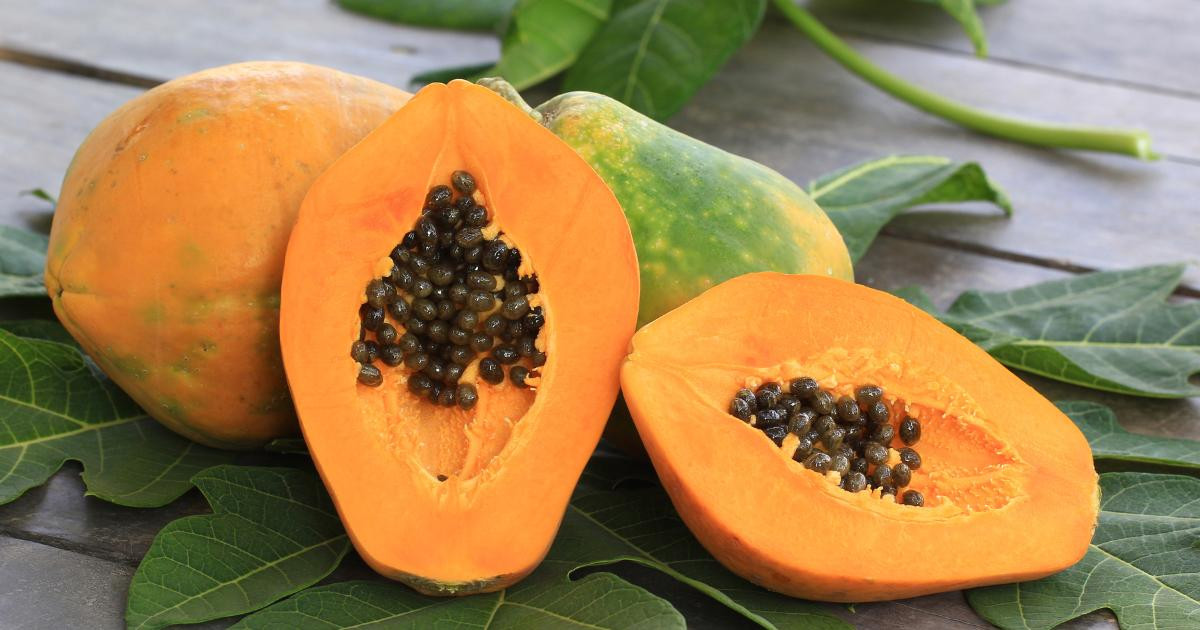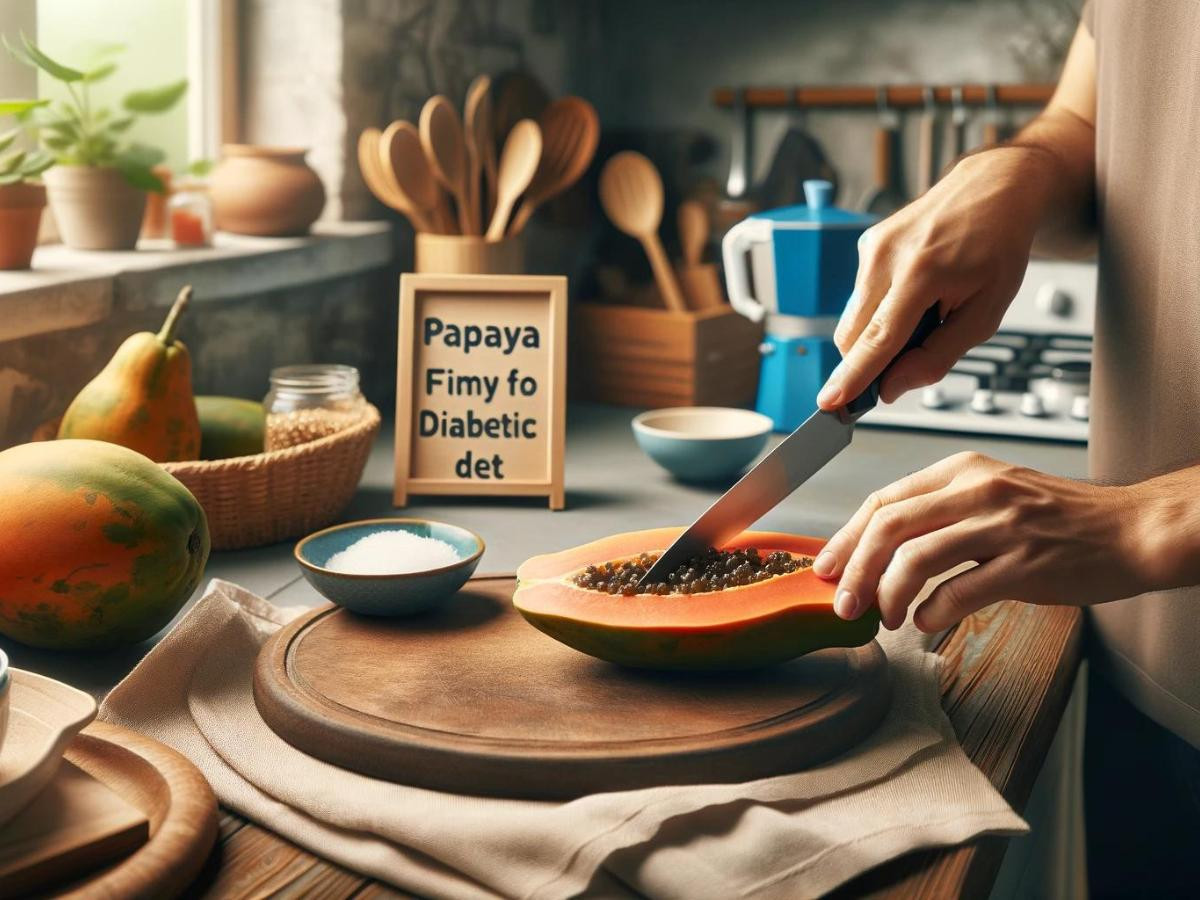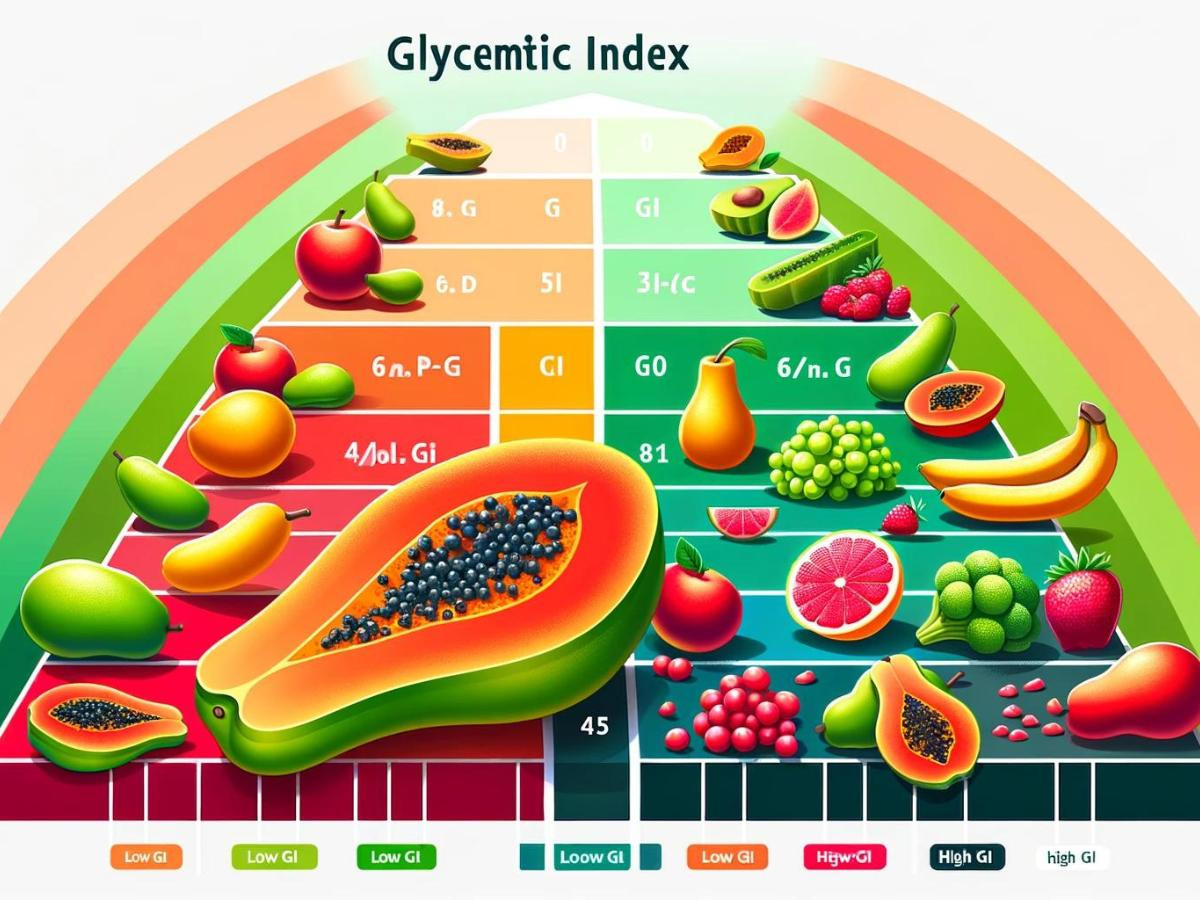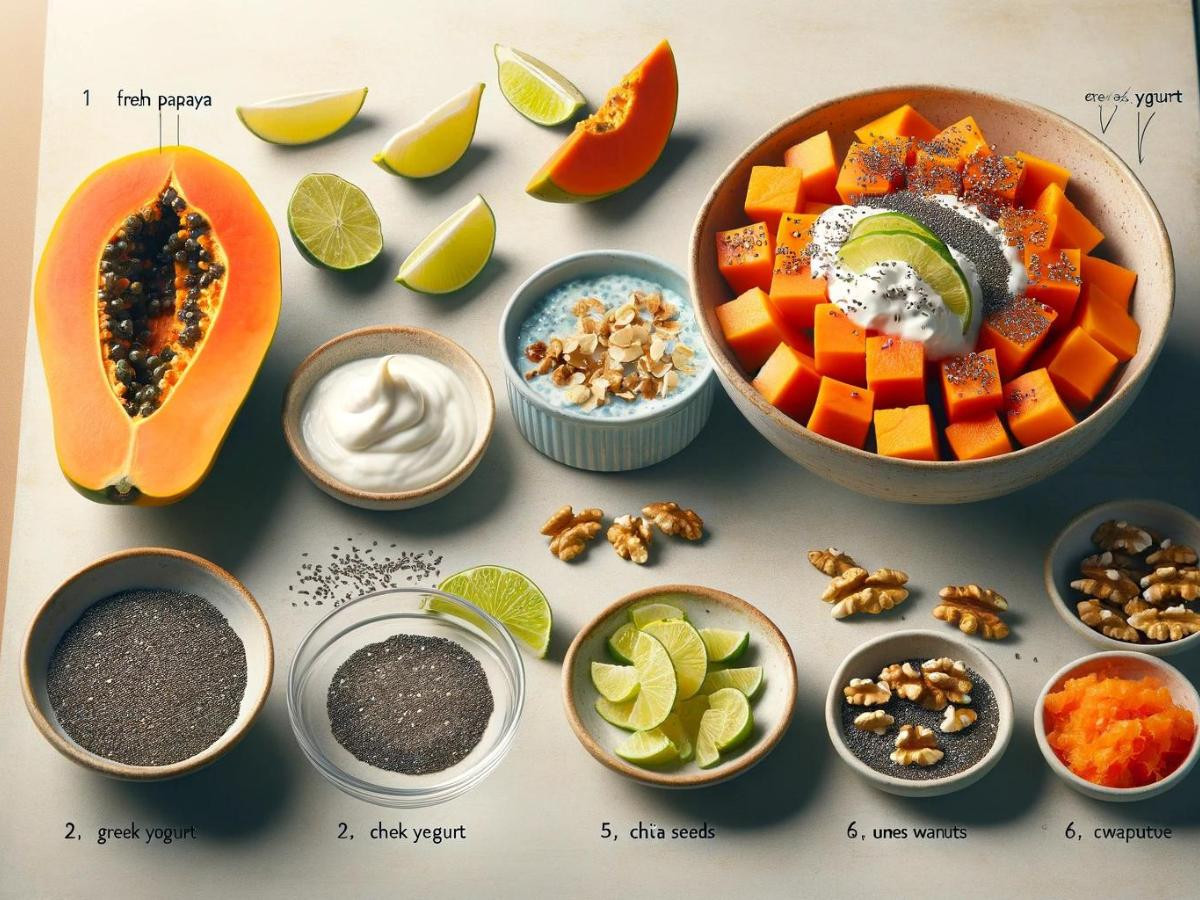Regulate Blood Sugar Levels When You Eat Papaya
Often, we come across a fruit so sweet you almost jump to the conclusion that there is just no way someone with diabetes can eat it. I wouldn’t let the sweetness fool you when it comes to papaya, but it does have to make you wonder, “Is papaya good for diabetes”? Fruits, often high in sugar, pose a dilemma for those with diabetes. However, not all fruits are created equal. Papaya, a tropical fruit, has gained attention for its potential benefits for diabetes management, such as preventing blood sugar spikes. Here is where you’ll find out whether papaya is suitable for diabetics and outline five benefits of incorporating this fruit into a diabetic diet.

The world of diabetes can often feel like walking through a culinary minefield, especially when fruits come into play. Enter nice ripe papaya, a tropical delight often raising eyebrows: Can those managing their blood sugar consume papaya and indulge without worry?
Is Papaya Good For Diabetes?
Having spent countless hours in the kitchen whipping everything from gourmet meals to simple, health-conscious dishes, I’ve seen firsthand the power of food as medicine in a healthy diet.
Papaya, with its sweet natural sugars and musky essence, has been a staple in my culinary adventures and a key player in my family’s journey with diabetes.
Growing up, my kitchen was a laboratory where my father and grandmother, both navigating the tricky waters of diabetes and high blood sugar levels, served as my unwitting test subjects.
Through trial and error and many sweet successes, we discovered that papaya was more than just a delicious snack you throw into your blender for a smoothie; it was a lifeline to keeping their blood sugar levels in check.
Table of Contents
Is Papaya Good For Diabetes?
Let me guide you through the sweet benefits of incorporating papaya into a diabetes-friendly diet backed by personal experience and a dash of science. Before you toss your papayas into the composter, let me show you how this diabetic papaya diet breaks down.
The Sweet Lowdown on Papaya and Blood Sugar

Papaya isn’t just another item on the fruit stand; it’s a low-glycemic index (GI) champion. For those of us keeping a close eye on blood sugar spikes, the GI is our best friend, and papaya, with its modest score, ensures that we can enjoy its lush sweetness and natural antioxidants without guilt or worry. Here’s why papaya is a top contender in the fruit section for any diabetes patients.
Low Glycemic Index

With a GI that doesn’t send blood sugar levels through the roof, papaya allows for a sweet treat without the rollercoaster ride. This means you can enjoy a slice without fretting about a sudden spike.
Fiber-Filled Goodness

Fiber and diabetes go hand in hand, like peanut butter and jelly. Papaya is loaded with fiber, which slows down sugar absorption into the bloodstream, helping to maintain steady blood sugar levels.
Antioxidant Powerhouse

The vibrant orange color of papaya isn’t just for show. It’s packed with vitamins A and C and beta-carotene and lycopene, antioxidants that combat inflammation and oxidative stress, both nuisances in diabetes management.
Digestive Aid

Thanks to papain, a digestive enzyme, papayas can ease digestion, ensuring that sugar is metabolized efficiently and effectively, aiding overall blood sugar control.
Heart-Healthy

People with diabetes are at a higher risk for heart disease, but papaya’s fiber, potassium, and vitamins can help keep your heart ticking healthily by managing cholesterol and blood pressure.
Incorporating Papaya into Your Diabetes Die
Now that you’ve whet your appetite for the benefits, you might be wondering how to introduce papaya into your diet without overstepping the boundaries of blood sugar management.
But aren’t sweet, sugary fruits bad for diabetics, meaning shouldn’t papaya raise blood sugar? Moderation and balance are your best friends here. A slice of papaya for breakfast or as an afternoon snack can inject a tropical flair into your diet without compromising your health goals.
To make papaya even more diabetes-friendly, pair it with a handful of nuts or a serving of Greek yogurt to add healthy fats and protein, further stabilizing blood sugar levels.
While papaya is a boon for those managing diabetes, it’s essential to remember that individual food responses can vary. Monitoring your blood sugar levels before and after consuming papaya can provide personal insights into how your body reacts to this fruit.
Adjusting portion sizes and pairing them with other foods to mitigate any glycemic response is crucial for individualized diabetes management.
A Papaya Recipe to Kickstart Your Journey

Let’s put theory into practice with a simple yet utterly delicious papaya recipe that’s as kind to your blood sugar as it is to your taste buds.
Papaya & Lime Breakfast Bowl
Ingredients
1 cup fresh papaya, diced
1/2 cup Greek yogurt (unsweetened)
A sprinkle of chia seeds
A dash of fresh lime zest
A handful of crushed walnuts
Instructions
Scoop the Greek yogurt into a bowl as your base.
Top with diced papaya, spreading it evenly across the yogurt.
Sprinkle chia seeds and crushed walnuts over the papaya.
Grate a bit of lime zest for a zingy finish.
Dive in and enjoy a refreshing, blood-sugar-friendly start to your day.
With its myriad health benefits, Papaya is a beacon of hope and flavor for diabetes patients. It’s a testament to the idea that food can be both medicine and pleasure, offering a way to control blood sugar levels without sacrificing taste.
As we continue to navigate the complexities of diabetes, let’s remember that nature has provided us with some sweet allies, and papaya is undoubtedly one of them. So next time you’re at the market, consider grabbing a papaya; your blood sugar (and taste buds) will thank you.
Beyond the Bowl: Versatile Ways to Enjoy Papaya

The Papaya & Lime Breakfast Bowl is just the beginning. Papaya’s versatility in the kitchen is boundless.
Consider it for savory dishes, like tropical salsa to accompany grilled chicken, or a vibrant addition to salads for a sweet contrast. You can even blend it into smoothies for a nutrient-packed drink.
The key is keeping portions in check and balancing them with other low-GI foods to maintain optimal blood sugar levels.
Engaging with Healthcare Providers
Before making significant changes to your diet, including introducing papaya as a regular staple, it’s wise to consult with healthcare providers or a dietitian.
They can offer tailored advice considering your overall health, dietary needs, and diabetes management plan. This ensures that your transition to incorporating papaya into your diet is safe and beneficial.
The Community Aspect

Sharing your experiences with papaya in your diet can also benefit others in the diabetes community.
Whether through social media, support groups, or casual conversations, discussing how papaya has impacted your blood sugar management can inspire others to explore this option. Plus, you might pick up some new recipes and tips on how to consume healthy fats.
Final Thoughts

With its low glycemic index, high fiber content, and abundance of antioxidants, this tropical fruit offers a delicious way to enrich your diet without worrying about unwanted sugar spikes.
Through personal anecdotes and scientific insights, the journey of integrating papaya into a diabetic diet has been demystified, highlighting its benefits for blood sugar regulation and overall health.
The versatility of papaya, from breakfast bowls to savory salsas, opens up a world of culinary possibilities, proving that managing diabetes can still be a flavorful affair.
By paying close attention to portion sizes and individual responses and in consultation with healthcare providers, papaya can safely be included in a balanced diabetic diet.
As we close this chapter, the message is clear: managing diabetes doesn’t mean sacrificing taste or joy in eating. Papaya is a testament to the power of food as medicine and pleasure, offering a vibrant, healthful addition to the diabetic diet.
It’s a reminder that with the right choices, the journey with diabetes can be both healthy and delightful.
FAQ and Additional Information
Can diabetics eat papaya daily?
Yes, diabetics can eat papaya daily, but moderation and portion control are key. Papaya is a low-glycemic fruit rich in fiber, vitamins, and antioxidants, making it beneficial for blood sugar management and overall health.
However, individual responses to papaya can vary, so diabetics must monitor their blood sugar levels to determine how their body reacts to it.
Consulting with a healthcare provider or dietitian can also provide personalized advice on incorporating papaya into a diabetic diet effectively.
Does papaya cause blood sugar spikes?
Papaya has a low to moderate glycemic index (GI), which raises blood sugar levels more slowly and to a lesser extent than high-GI foods. Its fiber content helps slow sugar absorption into the bloodstream, mitigating rapid spikes in blood sugar levels.
However, the impact on blood sugar can vary from person to person, depending on individual metabolic responses and how much papaya is consumed.
Eating papaya in moderation and as part of a balanced diet is generally considered safe for people with diabetes. However, monitoring blood sugar levels after eating papaya can help individuals understand how it affects them personally.
Is papaya good for kidneys?
Papaya is considered beneficial for kidney health due to its rich content of antioxidants, vitamins, and minerals. Here are a few reasons why papaya can be good for the kidneys and cardiovascular disease:
Antioxidant Properties: Papaya contains antioxidants like vitamin C, beta-carotene, and flavonoids, which can help reduce oxidative stress and inflammation, factors that can contribute to kidney disease.
Potassium: Although high potassium levels must be managed carefully in people with advanced kidney disease, papaya’s moderate potassium content can help regulate electrolyte balance in those with healthy kidney function.
Low Sodium: Papaya is low in sodium, making it a good dietary choice for maintaining healthy blood pressure levels and crucial for preventing kidney damage.
Fiber: The high fiber content in papaya can help reduce the risk of chronic kidney disease by improving metabolic control, reducing cholesterol levels, and aiding in weight management.
However, individuals with chronic kidney disease or those on dialysis may need to limit their intake of potassium-rich foods, including papaya, depending on their current kidney function and the advice of their healthcare provider.








One Comment